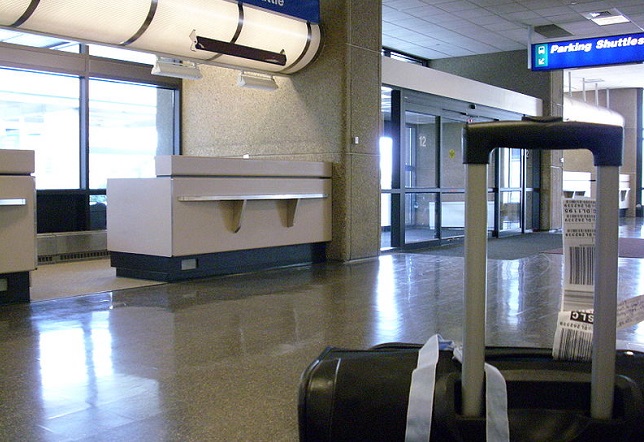These types of mobile technology are all being implemented to help to add value to the experience for travelers.
The Balogna Airport has revealed that it will be using a range of different forms of mobile technology, including geolocation beacons, near field communication (NFC) tags, and even QR codes to help to enhance the experience of travelers who make their way through this location.
There are about 7 million passengers that make their way through the airport every year.
By using geolocation beacons with Bluetooth low-energy technology, and by combining that with NFC tags and quick response codes, the Balogna Airport is hoping to be able to reach as many travelers as possible, regardless of the model or make of their mobile phones. Using these various types of tech, it will become possible for the airport to send pro-active notifications to travelers such as promotions and alerts. These will be sent directly to the smartphones so travelers will be able to receive them when they are most relevant to their present locations.
For travelers to receive these geolocation technology based benefits, they must use the free BLQ Balogna app.
 The purpose of the location based technology, the NFC tags and the QR codes is to make it possible for passengers to quickly and easily obtain the app and take advantage of everything the airport has to offer, no matter where they happen to be. The airport worked with Connecthings, a mobile tech company, in order to launch this project. The notifications sent to the app will be managed by airport staff who have access to a dedicated content management platform.
The purpose of the location based technology, the NFC tags and the QR codes is to make it possible for passengers to quickly and easily obtain the app and take advantage of everything the airport has to offer, no matter where they happen to be. The airport worked with Connecthings, a mobile tech company, in order to launch this project. The notifications sent to the app will be managed by airport staff who have access to a dedicated content management platform.
The airport’s IT & innovations manager, Silvia Lombardi, said that “Connecthings’ innovative solution will allow us to create new ways of interactions between our BLQ Bologna application and the dozens of installed, connected beacons within the airport – hence improving our customers’ dedicated information services.”
She added that these digital services give the airport the chance to engage with all visitors and travelers who find themselves there. It provides them with facilitated airport orientation so they will be able to use their favorite devices – which will automatically know where they are via geolocation – to find exactly what they need and learn about offers, opportunities and solutions of which they might not otherwise have been aware.

 NFC technology is expected to see significant growth, in terms of adoption, this year. This technology allows for digital information to be transmitted over short distances. NFC has made up much of the mobile payments environment for several years and it is becoming more important for retailers to embrace this technology in order to effectively engage consumers. Retailers are also feeling increased pressure to embrace omni-channel strategies. Ingenico Group predicts that more retailers will adopt such strategies to provide better services and engagement to consumers.
NFC technology is expected to see significant growth, in terms of adoption, this year. This technology allows for digital information to be transmitted over short distances. NFC has made up much of the mobile payments environment for several years and it is becoming more important for retailers to embrace this technology in order to effectively engage consumers. Retailers are also feeling increased pressure to embrace omni-channel strategies. Ingenico Group predicts that more retailers will adopt such strategies to provide better services and engagement to consumers.